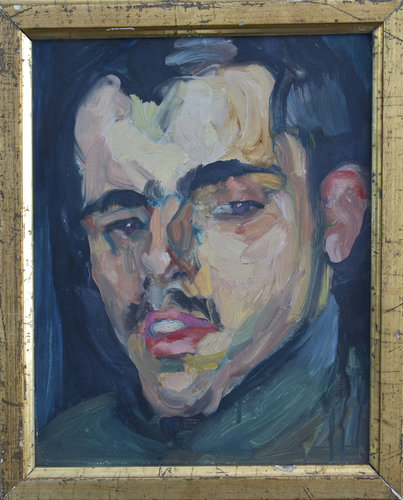Law & Politics
Tainted Nazi Era Collector’s Aunt Was Forgotten Artist Cornelia Gurlitt
A new exhibition highlights Cornelia Gurlitt's short art career.

A new exhibition highlights Cornelia Gurlitt's short art career.

Sarah Cascone

When Cornelius Gurlitt’s hidden art trove made headlines in November, most of the world was fixated on the breadth and depth of the 1,200-plus piece art collection and its tainted Nazi provenance. Hubert Portz, a German psychotherapist and amateur art historian, was interested for an entirely different reason: He’s long been hunting for work by Cornelia Gurlitt (1890–1919), the reclusive collector’s aunt, whose promising art career was cut short by her suicide at age 29.
Cornelia showed early promise as an artist, and was positively singled out for her contributions to a 1914 group show. After serving as a nurse in Lithuania during World War One, an experience that inspired at least one poignant lithograph, Cornelia moved to Berlin with ambitions of making a living off her Expressionist works. Unfortunately, she succumbed to depression, and her work passed into obscurity.
Cornelia came to Portz’s attention some years ago, the New York Times notes, while he was researching Dresden’s early-20th century art scene, and he became intrigued by her work. When he learned of Cornelius Gurlitt’s art collection, Portz reached out to the reclusive man, but has yet to receive a response to his inquiries.
Nevertheless, Portz remains confident that Cornelia’s work must be represented in her nephew’s holdings. He does not believe the rumors that Cornelia’s artwork was destroyed by her mother out of shame due to her daughter’s suicide.
Portz may be on to something: While the full contents of the collection in its current state have not yet been publicized, Cornelius’s father Hildebrand Gurlitt was investigated (and erroneously cleared) by the Monuments Men after World War Two, and his 1950 inventory of artwork included his sister’s work.
This weekend, an exhibition including much of Cornelia’s known work will open at the Kunsthaus Desiree, Hochstadt, a former branch of the Sparkasse bank that Portz has converted into a museum. Titled “A Vacant Room for Cornelia Gurlitt, Lotte Wahle, and Conrad Felixmüller,” the show will feature 23 pieces by Cornelia, as well as work by Wahle and Felixmüller, two of her Dresden friends.
Portz acquired nine of the artist’s lithographs from Frankfurt’s Galerie Joseph Fach. The works had previously belonged to the descendants of Cornelia Gurlitt’s lover, a married art critic named Paul Fechter. An additional 11 lithographs Cornelia had given to a friend before her death turned up in response to a newspaper advertisement. Some of the other works, which include an oil painting of Hildebrand, were lent to the exhibition by members of the Gurlitt family—but not Cornelius.
“A Vacant Room for Cornelia Gurlitt, Lotte Wahle and Conrad Felixmüller” will be on view April 26–June 14 at the Kunsthaus Desiree in Hochstadt.